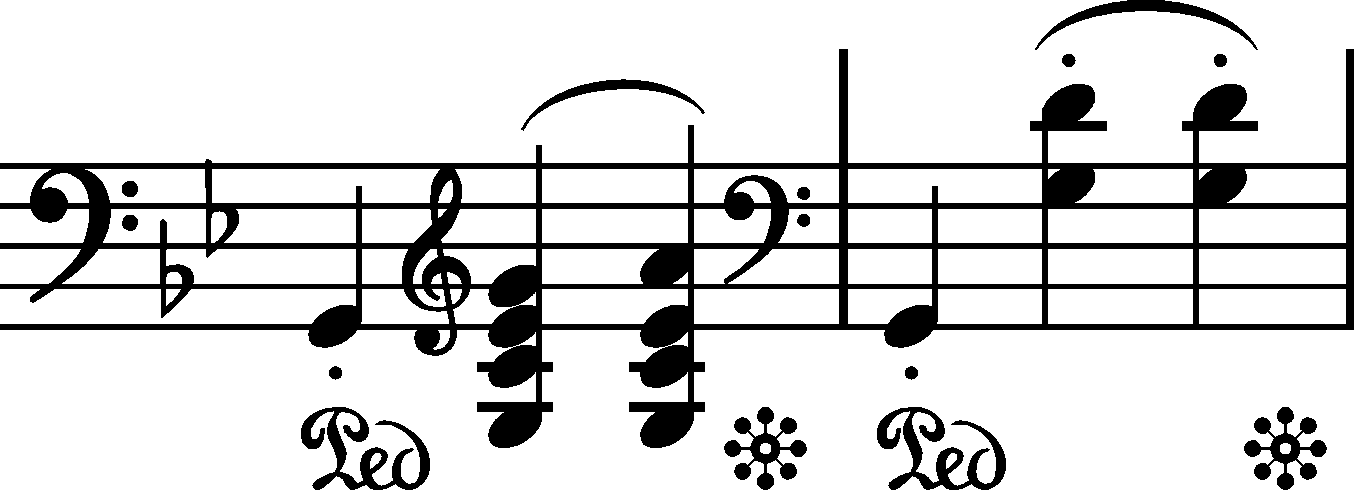



Issues : Accompaniment changes
|
b. 2
|
composition: Op. 63 No. 2, Mazurka in F minor
..
The triad in the original version in As, identical to the version of the analogous bar 10, was replaced by a sixth in the published version. Chopin seems to have strived to concentrate expression, i.a. through stricter control of the voices – cf. e.g. bar 25. category imprint: Graphic ambiguousness; Differences between sources; Corrections & alterations; Source & stylistic information issues: Accompaniment changes |
|||||||
|
b. 2-6
|
composition: Op. 2, Variation IV, primitive version
..
As in bars 1 and 5, in AsI the R.H. hemidemisemiquaver passages are not moved in parallel with the melody semiquavers. This is the initial version, subsequently simplified by reducing the number of large leaps. category imprint: Differences between sources; Corrections & alterations issues: Accompaniment changes |
|||||||
|
b. 3-4
|
composition: Op. 24 No. 1, Mazurka in G minor
..
Visible in A is the erased original version of the accompaniment, in which both bars had G crotchet with a staccato dot falling on the 1st beat. Both bars also had pedalling analogous to the pedalling preserved in adjoining bars. The notation before the change was as follows:
category imprint: Corrections & alterations; Source & stylistic information issues: Corrections in A , Accompaniment changes |
|||||||
|
b. 3-4
|
composition: Op. 10 No 2, Etude in A minor
..
In Ap the rhythmic values of subsequent two-note chords of the lower voice in the R.H. create in those bars (as well as in subsequent repetitions) an alternating short-long scheme (semiquaver-crotchet). Sometimes the resounding length contrast is additionally underlined with accents. In the main text we give the homogenous, as far as the sound is concerned, version of FE (→GE,EE). category imprint: Differences between sources; Corrections & alterations issues: Chopin's hesitations , Accompaniment changes |
|||||||
|
b. 3
|
composition: Op. 28 No. 4, Prelude in E minor
..
One can see traces of changing the pitch of the bottom note in the last pair of chords in As. On the basis of the photocopy at our disposal, however, it seems impossible to determine whether f was changed to e or the other way round. We assume that Chopin changed his mind only once and that it is the text of As after corrections that is compliant with the final version. category imprint: Corrections & alterations; Source & stylistic information issues: Accompaniment changes |

 -c1-f1 triad in
-c1-f1 triad in 

